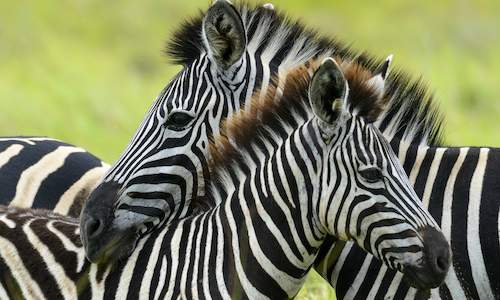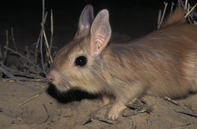
Springhare
Name
Springhare [Pedetes capensis]
Introduction
The springhare is, in fact, a rodent and not a hare. They are eaten in Africa, to some extent, and are hunted like the common hare.
Appearance
With a mass of 3 kg, the springhare has a head and body length of 400 mm, its tail also measuring 440 mm. It looks and behaves like a dwarf kangaroo with its short front legs and big hind legs. The springhare has long ears and a rabbit-like head, with an upper-body colour that varies from a yellowish-brown to a reddish-brown or cinnamon. Their underparts alter from orange to white, while their tails are tipped in a prominent dark brown. The springhare is the only large, bipedal rodent in its region.
Springhare Diet
The springhare eats rhizomes, corms, stems, seeds, leaves and roots. It searches for green grasses which contain moisture and are high in protein. They forage on all fours, but when eating, sit on their hind feet and tail to handle their food with their forefeet.
Springhare Breeding
After a gestation period of 77 days, the springhare gives birth to a single young. The mother gives birth in a burrow to a furred young that can move around and see almost right after birth. They are dependent on their mother’s milk until they are about seven weeks of age and weigh 1.3 kg. The springhare has no specific breeding period in South Africa, and females can birth three young in the span of a year. The young reach sexual maturity at eight months of age.
Springhare Behaviour
The springhare is preyed upon by the cheetah and birds of prey but can escape them by running away on their long, fast hind legs. They prefer short grassy spaces and sandy soils in which to burrow as their habitat.
Where they are found
The springhare is widely distributed within South Africa, apart from in desert and forest regions. They prefer flat, semi-arid to arid areas.
Field Notes
As springhares are an important food source to people throughout Africa, they are very rare in some regions of the continent.

Learning about the mammals of South Africa is now so much easier for all South Africans - SouthAfrica.co.za is an excellent source of inform...
more
